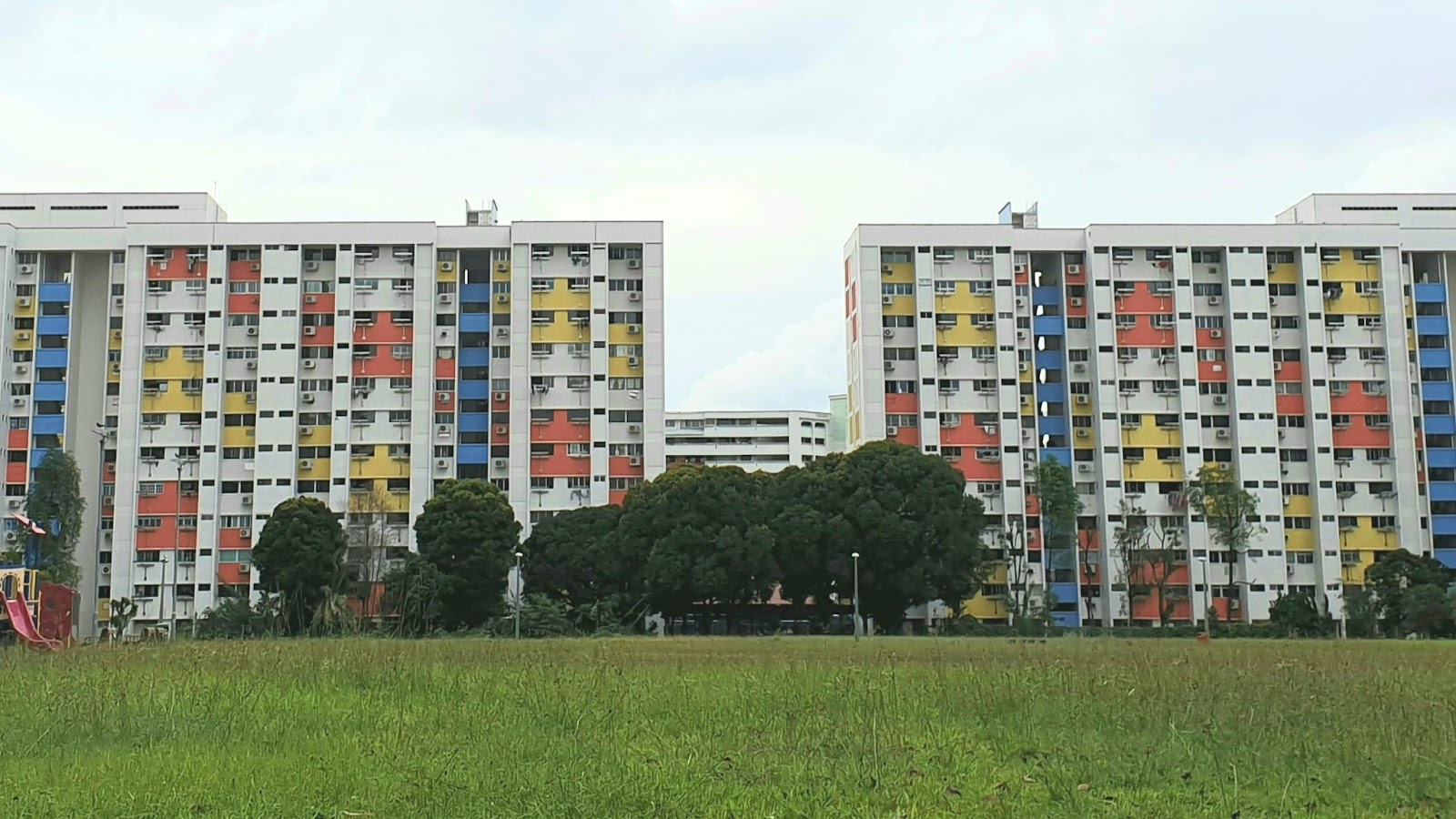All images: Paul Rio-Daza unless otherwise stated
Whenever someone asks where I live and I say Yishun, they always give me a sudden look of trepidation, followed by a quick laugh, trying to reassure themselves that I’m not ominous by association. While it’s true (to a certain liberal extent) that Yishun has a reputation of being a madcap place—stories of wild boars, a sanitary pad litterbug, even Netflix used Yishun in the promotion of its hit TV series Stranger Things—to all us regular Yishun folk, the neighbourhood is a place we call home.
To understand Yishun as it is now, we need to take a historic dive and revisit its humble beginnings. Yishun got its name from Lim Nee Soon, a man who made his fortune from rubber and pineapple plantations in the area.
ADVERTISEMENT
The district soon came to encompass Chinese immigrants hired as labourers to work on the rubber plantations. The villagers also cultivated fruit and vegetables and got into pig and poultry farming to earn additional income.
It was only in 1976 that the development of Yishun New Town began. It was a town designed with convenience in mind so that residents could have many amenities within reach. This meant building up the public transportation infrastructure here, with the Yishun Bus Interchange opening in 1987 and Yishun and Khatib MRT stations coming into existence two years later in 1989.
In 1993, various shopkeepers and merchants at Yishun Ring Road pooled their resources and upgraded their commercial units into a shopping area, and this is how Chong Pang City came about. Two years later, we got our very own Yishun Town Park, built on the grounds of an old rubber estate.
Things were status quo until 2008, when Yishun went through rejuvenation. This led to the construction of structures and features today, like Khoo Teck Puat Hospital, built in 2010 and the Yishun Integrated Transport Hub, which opened in 2019.
A bustling town
Mr Paul Daza, a 32-year-old Private Hire Driver who has been living in Yishun for three years, spoke about his fondness for the various spaces and facilities in Yishun.
“There are lots of family-friendly venues here,” he shared. “The numerous parks, Northpoint City, SAFRA, HomeTeamNS, Clubhouse and ORTO.”
31-year-old Nathalie, who lived in the Chong Pang area for four years, was equally effusive about how much there is to do around Yishun.
“With parks and reservoirs all around, you’ll never be left without something to do over the weekend. And honestly, with the number of affordable food places around, you could have varied family outings that last three whole years even if you tried a new store every day.”
Ms Sandy Chow, a 33-year-old content creator living in Yishun her entire life, also praised Yishun’s amenities, calling it a “self-sufficient town”.
“There are many schools in the neighbourhood, sufficient childcare facilities, playgrounds, parks and outdoor activities. I can safely say that everything is pretty convenient here. Yishun is well-connected to different parts of Singapore—I even have a direct bus straight to Changi airport, which has been a huge boon for me,” Sandy waxes lyrical.
“Over the years, Yishun has improved a lot, with the integrated transport hub and Northpoint City—anything I require is just a stone’s throw away. Not forgetting the healthcare and eldercare facilities that would come in handy as the ageing population grows.”
When asked about Yishun’s notorious reputation, Ms Chow feels that Yishun isn’t the “dangerous and cursed town” that everyone imagines it to be. “Other towns do have their fair share of incidents. It could be the coincidence of certain things happening within such a close timeframe, which would make people say: “Yishun again?””
ADVERTISEMENT
25-year-old Ms Hidayah Rahim, a Financial Consultant, also feels that Yishun’s reputation is greatly exaggerated.
Hidayah, who has lived in Yishun her whole life, said: “Some things are true to a certain extent, like the drug dealings—since I live in a neighbourhood where I’ve seen police chases—but I’m pretty sure the weird stuff happens elsewhere too, everyone just assumes it only happens in Yishun.”
The Great Yishun Condition
While it’s difficult to pin down when exactly Yishun received this moniker of a crazy town, this reputation gained momentum in 2015 due to a series of cat abuse cases.
Since September 2015, about 20 such cases have been reported, and of the 20, only two cats survived the numerous injuries inflicted. A 40-year-old man was arrested and charged with animal cruelty in December 2015, but that was not the end of these episodes. Even though a second man was arrested in 2016, there is still no clarity on how many of these cases each man is responsible for.
The fact that this is an ongoing problem since there were other reported cases in 2017 and 2019 is a horrifying piece of news.
However, this alarming situation involving our community cats is not unique to Yishun. In 2014, a man started a website due to the overwhelming number of cat abuse cases in and around the housing estate across the Golden Mile Complex. This goes back to 2011, and at the time of reporting in September 2014, there were about 50 such cases.
In 2021, there was news of cat slashing episodes in Ang Mo Kio, and the culprit was caught and jailed for animal cruelty. And if we go even further back, there were similar cases in Bedok in 2006 and 2007. The key difference here is media coverage. The spree quality of the Yishun cases meant that we were hearing about this fairly frequently, and the brutality involved sent fear racing through the community.
Mono, a 22-year-old university student who has lived in Yishun their entire life, remembers this incident vividly.
ADVERTISEMENT
“I remember that they happened in quick succession. There were multiple news reports with photos of the cats. I know my parents were suspicious because we had many cats around our block.”
From here, Yishun’s infamous reputation skyrocketed, and in 2017, a website was created to detail every unfortunate event that occurred in Yishun, going as far back as 2008.
On his Facebook page, website creator Lhu Wen Kai commented that he wanted to see if the news about Yishun was “pure media hype or something that bears genuine concern”. While he does feel that “the town’s notorious reputation was a classic case of over-representation in the alternative media”, compiling the information did make him think that there could be “some merit” to Yishun’s reputation.
Lhu singled out an area enclosed by Yishun Ring Road, which is an area where most of these head-scratching incidents occur, labelling it “The Devil’s Ring”.
Yishun’s infamy
Nathalie, who moved from Yishun to be closer to where she worked, recalled a head-scratching incident that happened to her while she was living in Yishun—a terse and tense interaction with her neighbour, who had been recently released from jail at the time.
“He took all my clothes from the rack along the corridor and threw them against my gate, even though the rack was standing on my side of the corridor. All this because he found the sight of my clothes offensive.”
Recently, a poll was conducted on HardwareZone, where netizens could vote on the craziest town in Singapore. It is no surprise that Yishun garnered 93.6% of the votes. One of the commenters even said that voting was a moot point since “Yishun isn’t infamous for nothing.”
Still, the efforts to detail the bizarre happenings in Yishun don’t paint a clear picture since gathering data on a single place with no sense of scale or relativity doesn’t exactly prove anything.
In 2018, a study conducted by Financial Research Analysts at ValuePenguin went even further to prove the ‘Yishun Crazy Town’ narrative. They identified Yishun North as the most crime-prone estate in Singapore, relying on crime data recorded by Neighbourhood Police Centres and compiled by the Singapore Police Force from 2012 to 2016.
This means that in comparison with 34 other neighbourhoods, Yishun North takes last place. However, these findings do not consider population or geographic area, merely totalling the number of crimes in each location.
Nee Soon Town Council offered its own methodology and findings in response to this information. Using data acquired from SingStat, the ranking was now based on preventable crimes recorded by the Neighbourhood Police Centre (NPC) in various estates annually.
The five preventable crimes are robbery, housebreaking, snatch theft, motor vehicle theft, and outrage of modesty.
This changed the ranking significantly, with Yishun South placing in the middle, taking spot number 18 out of 36, while Yishun North moved out of last place into number 29.
They also looked at the statistics from 2010 to 2016, which showed that crime in Yishun North dropped by 59 per cent. It seems that the ValuePenguin crime numbers were higher due to the lumping of money harassment cases with other crimes.
While placing 7th from the bottom isn’t exactly a glowing report, all this back and forth discussion on crime stats is only newsworthy because of Yishun’s reputation.
This is why an article in 2020 on a drug trafficking operation conducted by Central Narcotics Bureau singles out a man living in Yishun for its headline—“Drug Trafficker in Yishun among 138 nabbed in 11-day CNB operation”—even though 138 people from other parts of Singapore were also apprehended.
This is not to say that there are no drug-related crimes specific to Yishun. Just two years ago, Yishun made the news again when five suspects were arrested, and authorities seized over 360k worth of drugs and weapons.
Wild boars galore
With Yishun’s infamy being of public interest, the news tends to circulate rather quickly whenever something out of the ordinary happens here.
For instance, the recent situation involving a wild boar that knocked over a woman at a Yishun coffee shop. The news spread like wildfire, and I even had friends texting me about it, asking if I had seen the wild boar. Ms Chow mentioned that it was probably the most bizarre thing she had heard about concerning Yishun.
“When the wild boar attacked some residents at the Khatib open-air plaza, that was shocking as that place is usually quite crowded, and I wouldn’t expect any wild boars to roam into such populated areas.”
Still, Yishun is not the first place to have wild boars running amok. In fact, there have been quite a few wild boar attacks in Punggol as well. In February 2021, two women were injured in separate wild boar attacks and had to be taken to the hospital.
The victim in the first attack was bitten and dragged for about a metre before some residents came to her aid. Unsurprisingly, like cat abuse cases, these wild boar incidents are not just isolated to Yishun. Because of overfeeding, these wild boars become too dependent on humans for food, which leads to them venturing into our urban spaces in search of food.
Heartland with a heart
Just like how Florida became known as the place of all things bizarre, Yishun has developed a similar reputation due to the media. When penning news pieces, it is customary to use location as a marker of sorts, i.e., Yishun cat killer, but then, as a result, the place itself becomes synonymous with the crime.
Social media has also perpetuated this reputation, with websites specially created to track the weird happenings in one neighbourhood, which would undoubtedly reap similar findings if done for other neighbourhoods.
Now, its notoriety is a reputation Yishun can’t shake.
Still, amid all this infamy, some of the good things happening in Yishun sometimes get lost in the cracks, like the community spirit residents share with local vendors.
Nathalie, who lives in Warsaw now, remembers fondly the coffee aunty whose store she visited daily.
“The coffee aunty at Chong Pang market always remembered my coffee order. Every morning I would buy a coffee before heading to work, and even before I reached her store, she would spot me from a distance and start preparing my order so that when I got to the store, I didn’t need to wait.”
Esther, a 26-year-old teacher, also spoke about the sense of community she enjoyed in Yishun. “I have a warm, happy church family, friends, teachers and peers who grew up around me and went to school together around me.”
Yishun is also the first Dementia-friendly town in Singapore, with HDB blocks in Nee Soon South and Chong Pang that are colour-coded to help those with dementia find their way back home.
According to Dr Philip Yap, a senior consultant in the department of geriatric medicine at Khoo Teck Puat Hospital, “the features are intended to compensate for the physical and cognitive deficits that people with dementia may have”. If they cannot recall the number of their block, they might be able to recognise colours or icons, which could help other residents lead them home.
There’s also a Yishun Community Fridge, which involves residents donating food or collecting free food if they need to and a food pantry set up by a group of friends to help residents hit by hard times during the pandemic.
While buying into the narrative of Yishun’s notoriety isn’t particularly harmful, especially since the Yishunites that I spoke to, both past and present, are amused about this perception more than anything, it can instigate an us versus them mentality.
There was already some chatter like this with the whole “Build A Wall Around Yishun” joke making its way around the internet in 2017, due to Trump’s campaign statements at the time, as well as there being someone in Yishun building a wall along the corridor to deter a harassing neighbour.
While this is all said with a certain levity—of course, netizens don’t necessarily believe that there should be a wall in a country as small as Singapore—do we need another form of perceived difference?
Perhaps, we can take a leaf from Taylor Swift’s book and try our best to shake it off, innately understanding that living anywhere in Singapore comes with its pros and cons. At least we’re also known for our lucky Chong Pang toto outlet—even if it doesn’t exist anymore.







